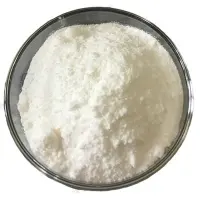-
Categories
-
Pharmaceutical Intermediates
-
Active Pharmaceutical Ingredients
-
Food Additives
- Industrial Coatings
- Agrochemicals
- Dyes and Pigments
- Surfactant
- Flavors and Fragrances
- Chemical Reagents
- Catalyst and Auxiliary
- Natural Products
- Inorganic Chemistry
-
Organic Chemistry
-
Biochemical Engineering
- Analytical Chemistry
-
Cosmetic Ingredient
- Water Treatment Chemical
-
Pharmaceutical Intermediates
Promotion
ECHEMI Mall
Wholesale
Weekly Price
Exhibition
News
-
Trade Service
Yimaitong edited and sorted, please do not reprint
without authorization.
Adult still disease (AOSD) is a class of systemic inflammatory diseases of unknown etiology, mainly affecting young people, typically manifested as intermittent
such as macrophage activation syndrome.
Due to the diversity of clinical manifestations of AOSD, there are certain difficulties in diagnosis and treatment1
.
The traditional view is that AOSD is an autoinflammatory disease, but in recent years, studies have found that autoimmune components are involved in its pathogenesis, suggesting that AOSD is at the intersection of the innate immune system and the adaptive immune system2
.
The pathogenesis of AOSD will be briefly described here, and its diagnosis and treatment progress
will be summarized.
The pathogenesis of AOSD is not fully understood
At present, the etiology of AOSD is not fully understood, but it is generally believed that its pathogenesis may be related to infection, genetics, immune dysfunction, etc.
(Figure 1).
Figure 1 Summary of pathogenesis of AOSD
Clinical diagnosis of AOSD remains challenging
Clinical diagnosis of AOSD remains challenging
due to the lack of specific clinical symptoms and laboratory markers.
There are currently two sets of diagnostic criteria validated and recognized: the Yamaguchi criteria (1992) and the Faterel criteria
.
The most widely used diagnostic criterion is the Yamaguchi criterion, which has a sensitivity of 96.
3%, specificity of 98.
2%, positive predictive value (PPV) of 94.
6%, and negative predictive value (NPV) of 99.
3%.
The downside, however, is that this criterion requires careful exclusion of infections, malignancies, and other connective tissue disorders
.
The newly proposed diagnostic criteria for glycosylated ferritin-based Faterel are 87.
0% sensitivity, 97.
8% specificity, 88.
7% PPV and 97.
5% NPV2
.
However, the detection of ferritin glycosylated ferritin is not widely carried out in clinical practice, which limits the promotion and application of Fautrel criteria to some extent1
.
Yamaguchi Standard 3:
Main criteria: (1) fever ≥ 39 °C and lasts for more than 1 week; (2) Joint pain lasts for more than 2 weeks; (3) Typical rash; (4) White blood cell count ≥ 10x109L and neutrophil > 80%.
Secondary criteria: (1)
.
Exclusion criteria: (1) infectious diseases (especially
Diagnosis: AOSD
is diagnosed if at least 5 of the above criteria (at least 2 of which are the primary criteria) are met after negating the exclusion criteria.
Treatment of AOSD is mostly empirical
Treatment of AOSD is mostly empiric based
on sporadic cases, retrospective case studies, and small clinical trials.
The main therapeutic goals of AOSD are to relieve symptoms and control inflammation, which can be summarized into two parts: conventional treatment and biological therapy (Figure 2).
Some experts emphasize the need to consider disease stage, major clinical symptoms, and possible complications
before developing appropriate treatment strategies for patients with AOSD.
Figure 2 Treatment flow
Traditional treatment
Classical traditional therapies include nonsteroidal anti-inflammatory drugs (NSAIDs), glucocorticoids, and disease-modifying antirheumatic drugs (DMARDs).
NSAIDs and glucocorticoids are considered first-line treatment
for AOSD.
Typically, NSAIDs are used in patients with mild to moderate disease, but in less than 20% of cases there is relief from fever and musculoskeletal symptoms
.
It is worth noting that the use of NSAIDs without caution can lead to serious side effects, for example, when transaminase levels are high, high-dose indomethacin and aspirin can induce liver failure
.
DMARDs, such as methotrexate (MTX), cyclosporine A (CsA), and
for patients with AOSD who do not respond or do not tolerate first-line therapy.
Among them, methotrexate is the most commonly used DMARDs
.
However, methotrexate is hepatotoxic and liver function
must be monitored during use.
In recent years, more and more clinicians have also found
.
In one case of AOSD with
with 0.
5 mg/bid colchicine daily for 2 months.
Biological therapy
At present, common clinical TNF-α inhibitors are
.
Overall, TNF-α inhibitors are well tolerated in the treatment of AOSD and show better efficacy in the treatment of chronic joint symptoms, but are less effective than IL-1 inhibitors and IL-6 inhibitors
in the treatment of systemic manifestations.
IL-1β is a key pro-inflammatory cytokine in the immune mechanism of AOSD, and IL-1β inhibitors are widely used biologics in the treatment of AOSD and supported
by a series of clinical trials.
Such as anakina, canakinumab, and rilonacept
.
The Italian expert consensus recommends that IL-1 inhibitors are relatively safe and effective in patients with refractory AOSD, especially those with systemic manifestations, and that biologics can be used as first-line and subsequent therapy
.
In addition, the treatment of AOSD includes
.
Tocilizumab treatment has been shown to improve the clinical manifestations and laboratory parameters of AOSD and reduce the need
for glucocorticoids.
IL-18 and IL-18BP are also effective biotherapeutic targets for AOSD, but research on related inhibitors is limited
.
References:
1.
YI Xiaoqing, LUO Shuaihantian, ZHANG Guiying, et al.
Progress in diagnosis and treatment of Still disease in adults[J].
Chinese Journal of Dermatology,2021,54(2):165-169.
DOI:10.
35541/cjd.
20190772.
2.
Rao S, Tsang LS, Zhao M, Shi W, Lu Q.
Adult-onset Still's disease: A disease at the crossroad of innate immunity and autoimmunity.
Front Med (Lausanne).
2022 Aug 22; 9:881431.
doi: 10.
3389/fmed.
2022.
881431.
PMID: 36072947; PMCID: PMC9442343.
3.
ZHU Xiaoxia, LI Qin, WANG Yue, et al.
Norms for diagnosis and treatment of adult Still's disease[J].
Chinese Journal of Internal Medicine,2022,61(4):370-376.
DOI:10.
3760/cma.
j.
cn112138-20211115-00806.







